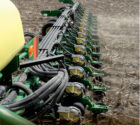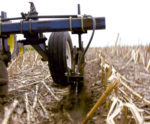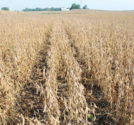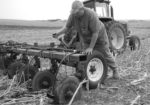Advertise Follow Us
Articles Tagged with ''Nebraska''
Mastering the A, B, Cs of soil fertility means managing nitrogen, phosphorus and potassium first, then taking care of secondary nutrients and micronutrient levels, a soil-testing expert says.
Read More
Lifelong Learning Serves Nebraska No-Tiller Well
Subsurface drip irrigation and no-till save water, time and money, while boosting corn, soybean and grain sorghum yields
Read More
No Longer Afraid Of Residue
Evenly spreading residue creates a uniform base for planting, better emergence and consistent stands for Nebraska no-tiller Matt Kathol
Read More
Practices And Products That Can Make Your Fertility Program Pay
Maximizing fertilizer efficiency and plant nutrient uptake ensures that an expensive input earns its keep in your no-till system.
Read More
Diversified Crop Rotation Has Its Pluses
Nebraska no-tiller finds wheat, cover crops give him more effective nutrient management options and help build organic matter.
Read More
Uncovering The Profit In No-Tilled Soybeans
Reducing seeding rates, using no-till planters and switching to non-GMO varieties are just a few of the things no-tillers are considering to improve the bottom line.
Read More
What I've Learned from No-Tilling
Firsthand Experience Led No-Tiller To Advocate Practice In Nebraska
Conservation of soil, a better quality of life and the time to invent the TracPacker were all benefits of no-till for Dan Gillespie.
Read More
Build Organic Matter With Diverse Cropping Rotations
Continuous no-till, along with winter wheat, field peas, proso millet and a CANULA cover crop, raised organic-matter levels and led to better water infiltration for this Nebraska no-tiller.
Read More














